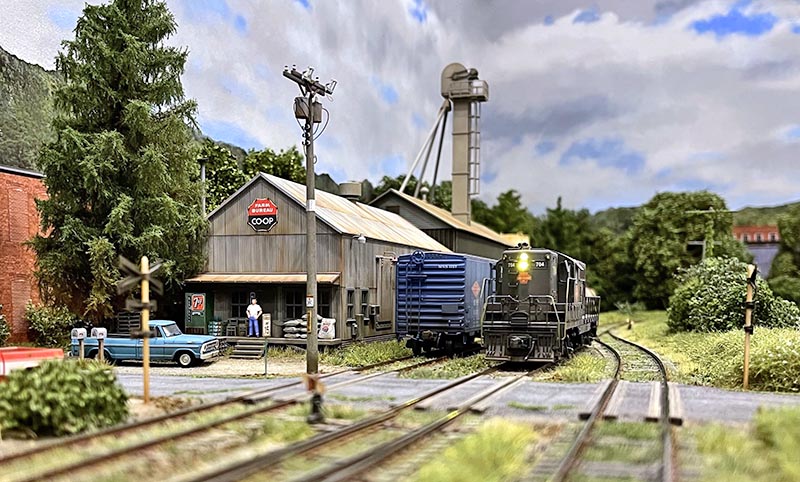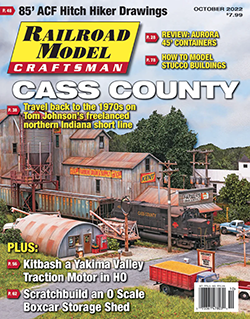 by Tom Johnson/photos by Karrie Goelz
by Tom Johnson/photos by Karrie Goelz
My model railroading philosophy developed back in 1984 when I was building my first shelf layout, the freelanced Logansport & Indiana Northern (featured in the November 1985 issue of Railroad Model Craftsman). I have always been a minimalist with my layout designs over the years, keeping them narrow and the track design simple. I tore down that railroad a few years later and built my second version of the L&IN. This edition was a much larger layout, about 100 feet in length, and was anywhere from 8 to 12 inches deep in multiple locations. Despite its size, the railroad was easy to maintain and keep clean. I completed the scenery in a brief time, which allowed me to concentrate on details. Narrow shelf layouts have these advantages!
Three years ago, we decided to sell everything and relocate from Indiana to Florida, following our kids who had moved the year before. I was able to sell my L&IN to a good friend who is incorporating my old layout into his much larger railroad.
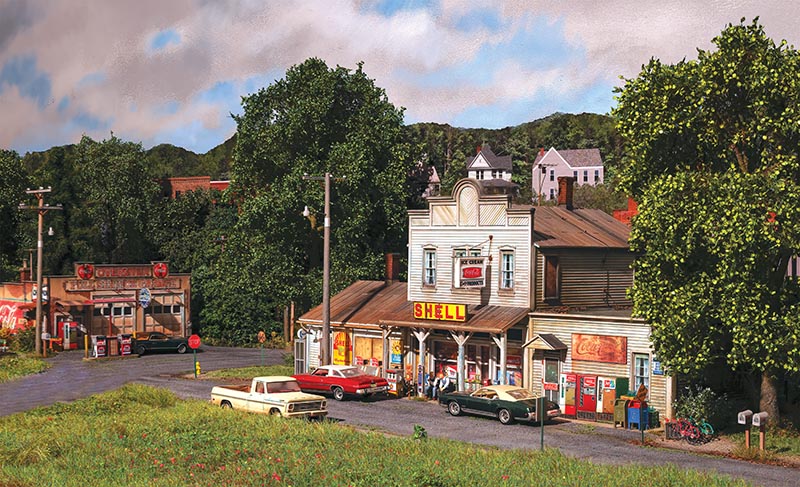
ABOVE: The sun is getting low in the western sky and casting long shadows on Gene’s Neighborhood Grocery and Overmyer Garage. Several locals are sitting out front of the grocery store discussing events from the week while enjoying a bottle of pop. Scenes like this are typical of rural northern Indiana where the author grew up. Construction of the grocery store was detailed in the November 2020 issue of RMC, “Kitbash and Detail a Country Store.”
There are precious few basements in Florida, so I built my new layout in a spare bedroom. I decided to give up on the L&IN concept and start over with a much smaller and simpler short line concept. As a result, I came up with the Cass County Railroad, and designed the layout around serving one modeled town.
Cass County Concept
When six bankrupt railroads were combined into the new Conrail system in 1976, hundreds of unprofitable or duplicate branch lines were eliminated from the map. The late 1970s saw several new short line railroads start up throughout the Midwest and Northeast as a result. In rural Indiana, many of them served a single business like an elevator or feed mill. These new short lines did everything they could to keep their customers in business by supplying them with all the covered hoppers they needed to ship their corn, soybeans, and wheat.
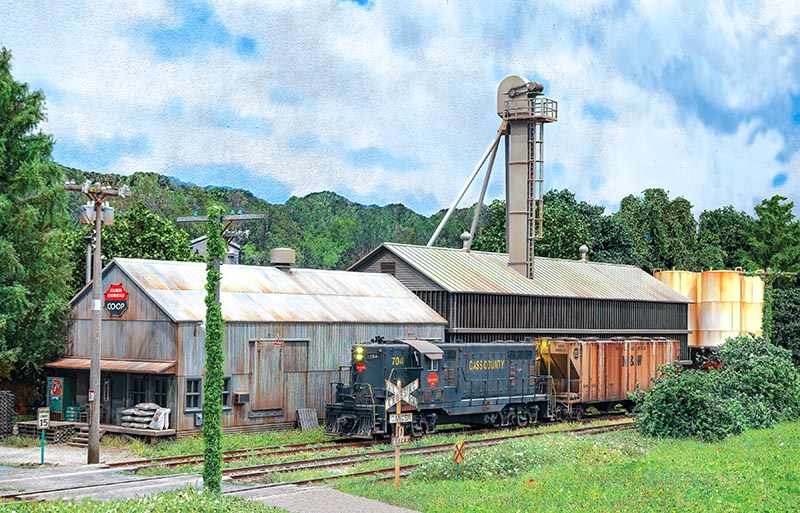
ABOVE: Cass County GP7 704 is pulling an empty covered hopper that was loaded with fertilizer for Farm Bureau Co-op Fertilizer.
My freelanced Cass County Railroad operates several spurs in and around Logansport, Ind., in 1978. All spurs are former Pennsylvania Railroad track slated for abandonment after Conrail took control from Penn Central in 1976. The Cass County Railroad also operates branches that run north to Kewanna and northeast to Mexico, Ind., but these are not modeled. Instead, I am modeling a freelanced area inside the town of Logansport that serves three grain elevators, a fertilizer facility, and other spots for boxcars loaded with bagged fertilizer, seed, and feed.
Layout Construction
My Cass County Railroad is a U-shaped layout in a spare bedroom. It occupies three walls that measure roughly 11’x10’x8’. I built three modules and bolted them together to form a U-shape. Each module was built using simple construction methods with 1×4 bracing and a high-quality plywood surface. All three shelves were glued and screwed together. Each module is 16 inches deep.
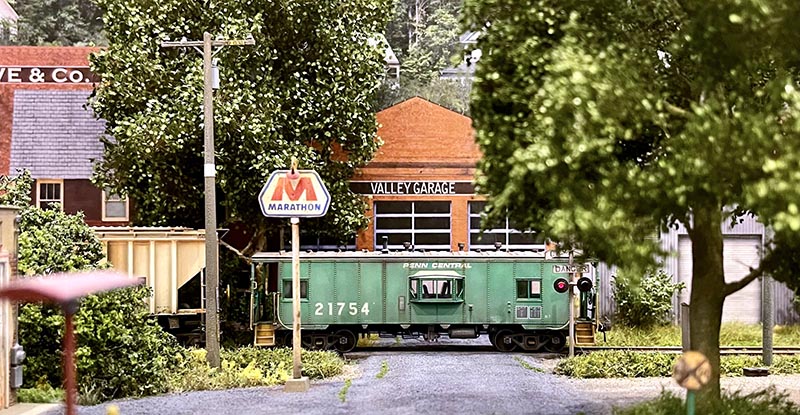
ABOVE: A former New York Central bay window caboose still in Penn Central livery is bringing up the rear of the Conrail local dropping off interchange cars for Cass County Railroad.
I attached 1×4 furring strips horizontally to all three walls which gave me a ledge to hold the shelves up and keep them straight so I could easily screw them to the wall. I made brackets out of 1×4 lumber to add extra support to the shelves. My shelves are very solid! I used masking tape to design my track plan, placing strips to fit my plan to the actual space….


